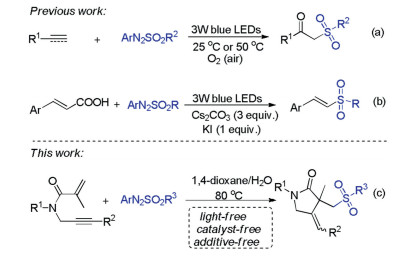
Citation:
An Min Xiang, Li Zhou, Cheng Guo Hu, Sheng Shui Hu. Electrochemical determination of sulphide at multi-walled carbon nanotubes-dihexadecyl hydrogen phosphate composite film modified electrodes based on in situ synthesis of methylene blue[J]. Chinese Chemical Letters,
;2008, 19(1): 73-75.
doi:
10.1016/j.cclet.2007.10.040

-
A novel electrochemical method for the determination of sulphide at a multi-walled carbon nanotube-dihexadecyl hydrogen phosphate composite film coated glassy carbon electrode (MWNTs-DHP/GCE) based on in situ synthesis of methylene blue (MB)was established.
-
Sulfone-containing compounds are frequently found in pharmacologically active compounds, natural products, and materials [1]. Furthermore, they can also be employed as important intermediates in various organic transformations to access a series of useful molecules [2]. Consequently, the introduction of sulfone functionality into organic framework has attracted considerable synthetic pursuit of chemists because of their interesting biological activities and versatile synthetic applications [3]. During the past decades, a number of sulfonylating agents such as sulfonyl chlorides [4], sulfonyl hydrazides [5], sulfinates [6], sulfinic acids [7], thiophenols [8], sulfonyl cyanides [9], sulfonyl selenides [10] and SO2 surrogates [11] have been developed for the construction of organic sulfones. Nevertheless, most of these sulfonylation reactions usually require the use of catalysts or a stoichiometric amount of oxidants, or suffer from complex reaction conditions. It is still highly desirable to develop new strategies to construct sulfone-containing compounds from simple sulfonylating agents under mild conditions.
Arylazo sulfones are colored and bench stable compounds, which could generate aryl radical and sulfonyl radical along with the release of N2 through the homolytic cleavage of C-N and S-N bonds under visible-light irradiation or heating conditions [12]. Generally, arylazo sulfones are utilized as arylating reagents in photoinduced reactions in the absence of photocatalyst [13]. Recently, arylazo sulfones have alternatively emerged as sulfonylating agents for constructing sulfone-containing compounds [14]. In 2019, our group reported oxysulfonylation of alkenes or alkynes with arylazo sulfones and dioxygen leading to β-oxo sulfones under visible-light irradiation conditions (Scheme 1a) [14a, b]. In 2020, Yadav and co-workers also described an efficient visible-light mediated decarboxylative sulfonylation of cinnamic acids and arylazo sulfones for the synthesis of (E)-vinyl sulfones (Scheme 1b) [14c]. As our ongoing interest in sulfonylation reactions [15], herein, we wish to present a catalyst- and light-free selective sulfonylation/cyclization of 1,6-enynes with arylazo sulfones to synthesize sulfonated γ-butyrolactams under simple heating conditions (Scheme 1c).
Scheme 1
The cyclization of 1, n-enynes has become as a powerful protocol for the construction of various important heterocycles such as quinolines, pyrroles, pyridines, furans, indoles and pyrans in terms of its step-economy and high reaction efficiency [16-18]. γ-Butyrolactam is the core structure of a large number of natural and biologically active compounds, which covered a wide spectrum of biological activities [19]. Recently, some functionalized γ-butyrolactams have been elegantly synthesized through the radical 1,6-enyne cyclization strategies under light or strong oxidant mediated conditions [20]. The present reaction, which simply utilizes arylazo sulfones as sulfonylating agents, offers a convenient and regioselective approach to access various sulfonylated γ-butyrolactams under mild and catalyst-free conditions.
At the beginning of the experiment, the model reaction of N-phenyl-N-(prop-2-yn-1-yl)methacrylamide (1a) with 4-methoxyphenylazo mesylate (2a) was chosen to test the optimized reaction conditions. The product 3a was only isolated in 6% yield when the model reaction was conducted in 1, 4-dioxane at 80 ℃ (Table 1, entry 1). To our delight, the yield of 3a was largely increased when water was added in this reaction system (Table 1, entries 2–6). The highest yield of 3a (70%) was obtained when the ratio of 1, 4-dioxane and water was 2:1 (Table 1, entry 6). The yield would be slightly decreased if we continued to increase the amount of water (Table 1, entry 7). Next, various mixed solvents with organic solvent and water (2/1) were investigated (Table 1, entries 8–15). Generally, low to moderate yields were observed when the reaction was carried out in the mixture of EtOH, DME, THF, DMF, DMSO, or DCE with H2O (2/1). Only a trace amount of product 3a was detected when the reaction was performed in CH2Cl2/H2O (2/1). None of the product was observed in CH3CN/H2O (Table 1, entry 15). The decrease of reaction temperature would lead to lower reaction efficiency. No transformation was observed when the reaction was conducted at room temperature (Table 1, entry 17). The reaction was not improved when the reaction temperature was increased to 90 ℃ (Table 1, entry 18). Furthermore, product 3a was still obtained in good yield when the reaction was carried out under nitrogen atmosphere (Table 1, entry 19). Moreover, the use of other arylazo mesylates (4-methylphenylazo mesylate, 4-fluorophenylazo mesylate or 4-chlorophenylazo mesylate) to replace 4-methoxyphenylazo mesylate also gave the desired product 3a, but lower reaction efficiency was observed (Table 1, entries 20–22). Moreover, when the reaction was carried out under irradiation with 3 W Blue LED lamps, the corresponding product 3a was obtained in 22% yield (Table 1, entry 23).
Table 1
Under the optimized conditions, the scope and limitation of various 1,6-enyne derivatives and arylazo sulfones were further examined (Scheme 2). Generally, a series of 1,6-enynes with both electron-donating and electron-withdrawing groups on the N-aromatic ring could undergo the reaction efficiently to produce the desired products (3b-3l) in moderate to good yields. Notably, halogen substituents such as F, Cl and Br groups were all tolerated in this reaction system, which could be used for the further modification via coupling reactions. It was found that the reaction efficiency was greatly affected by the steric hindrance of substituent on the aromatic ring, and only a trace amount of product 3e was detected when ortho-methyl N-aromatic ring substrate was employed in this system. Unfortunately, when N-alkyl substituted 1,6-enyne such as N-benzyl-N-(prop-2-ynyl) methacrylamide was tested in the present reaction, none of the desired product 3n was detected. It should be noted that internal alkyne such as N-(but-2-yn-1-yl)-N-phenylmethacrylamide was suitable for this reaction, affording the product 3m in moderate yield. Then, the scope of different arylazo sulfones was investigated. Arylazo alkylsulfone (i.e., 4-methoxyphenylazo ethyl sulfone) could also be utilized in this system to afford the corresponding product 3o in 68% yield. Moreover, a variety of arylazo arylsulfones bearing an electron-donating (methyl and methoxy) or an electron-withdrawing group (fluoro, chloro, bromo and trifluoromethyl) on the aryl rings were suitable substrates, and the corresponding products (3r-3x) were obtained in moderate to good yields.
Scheme 2
To investigate the possible reaction mechanism, two control experiments were carried out. When radical scavenger TEMPO (2, 2, 6, 6-tetramethyl-1-piperidinyloxy) was added in the model reaction system, the transformation was extremely inhibited and aryl-TEMPO adduct was observed by LC–MS. This result suggested that a radical process might be involved in the present reaction (Scheme 3a). Furthermore, the cyclization product 1a' was not generated from 1a under standard conditions in the absence of 4-methoxyphenylazo mesylate (2a) (Scheme 3b), suggesting that this cascade cyclization was triggered by in situ generated sulfonyl radical.
Scheme 3
Based on the above experimental results and previous reports [4, 7, 8, 13, 14], a possible reaction pathway was proposed as demonstrated in Scheme 4. Initially, the homolysis of N–S bond of arylazo sulfone 2 generated sulfonyl radical 4 and aryl radical along with the release of N2 under heating conditions. Subsequently, the selective addition of sulfonyl radical 4 to C=C bond gave alkyl radical 5, which further underwent the intramolecular cyclization with the C-C triple bond to give the vinyl radical 6. Finally, the abstraction of a hydrogen from the solvent would produce the desired product 3.
Scheme 4
In summary, a convenient and efficient method has been developed for the construction of sulfonylated γ-butyrolactams through the regioselective sulfonylation/cyclization of 1,6-enynes with arylazo sulfones. The present transformation could be achieved under catalyst- and additive-free conditions via the sequential formation of C-S and C-C bonds. This protocol simply utilizes arylazo sulfones as sulfonylating agents offering a highly attractive routine to synthesize sulfonylated γ-butyrolactams, which is expected to exhibit potential application in synthetic chemistry.
Declaration of competing interest
The authors report no declarations of interest.
Acknowledgments
This work was supported by the International Cooperation Project of Qinghai Province (No. 2018-HZ-806), the Youth Innovation and Technology Project of Higher School in Shandong Province (No. 2019KJC021), the Natural Science Foundation of Shandong Province (No. ZR2018MB009), the Qinghai Key Laboratory of Tibetan Medicine Research (No. 2017- ZJ-Y11) and CAS "Light of West China" Program 2018, and Entrepreneurship Training Program for College Students (No. 201910049).
Appendix A. Supplementary data
Supplementary material related tothis article can be found, in the online version, at doi:https://doi.org/10.1016/j.cclet.2020.11.059.
* Corresponding author at: School of Chemistry and Chemical Engineering, Qufu Normal University, Qufu 273165, China.
** Corresponding author.
E-mail addresses: xhzhao@nwipb.cas.cn (X. Zhao), weiweiqfnu@163.com (W. Wei).
-

-
-
[1]
Mengfan Zhang , Lingyan Liu , Peng Wei , Wei Feng , Tao Yi . A proximity tagging strategy utilizing an activated aldehyde group as the active site. Chinese Chemical Letters, 2025, 36(4): 110127-. doi: 10.1016/j.cclet.2024.110127
-
[2]
Meiling Xu , Xinyang Li , Pengyuan Liu , Junjun Liu , Xiao Han , Guodong Chai , Shuangling Zhong , Bai Yang , Liying Cui . A novel and visible ratiometric fluorescence determination of carbaryl based on red emissive carbon dots by a solvent-free method. Chinese Chemical Letters, 2025, 36(2): 109860-. doi: 10.1016/j.cclet.2024.109860
-
[3]
Yichang Liu , Li An , Dan Qu , Zaicheng Sun . “双碳”背景下的综合设计实验——以PbCrO4催化甲基蓝的光降解速率常数测定为例. University Chemistry, 2025, 40(6): 222-229. doi: 10.12461/PKU.DXHX202407105
-
[4]
Peng Zhou , Ziang Jiang , Yang Li , Peng Xiao , Feixiang Wu . Sulphur-template method for facile manufacturing porous silicon electrodes with enhanced electrochemical performance. Chinese Chemical Letters, 2024, 35(8): 109467-. doi: 10.1016/j.cclet.2023.109467
-
[5]
Liwen Wang , Boyang Wang , Siyu Lu , Shubo Lv , Xiaoli Qu . High quantum yield yellow emission carbon dots for the construction of blue light blocking films. Chinese Chemical Letters, 2025, 36(2): 110497-. doi: 10.1016/j.cclet.2024.110497
-
[6]
Xiuzheng Deng , Changhai Liu , Xiaotong Yan , Jingshan Fan , Qian Liang , Zhongyu Li . Carbon dots anchored NiAl-LDH@In2O3 hierarchical nanotubes for promoting selective CO2 photoreduction into CH4. Chinese Chemical Letters, 2024, 35(6): 108942-. doi: 10.1016/j.cclet.2023.108942
-
[7]
Boran Cheng , Lei Cao , Chen Li , Fang-Yi Huo , Qian-Fang Meng , Ganglin Tong , Xuan Wu , Lin-Lin Bu , Lang Rao , Shubin Wang . Fluorine-doped carbon quantum dots with deep-red emission for hypochlorite determination and cancer cell imaging. Chinese Chemical Letters, 2024, 35(6): 108969-. doi: 10.1016/j.cclet.2023.108969
-
[8]
Zeyu XU , Tongzhou LU , Haibo SHAO , Jianming WANG . Preparation and electrochemical lithium storage performance of porous silicon microsphere composite with metal modification and carbon coating. Chinese Journal of Inorganic Chemistry, 2024, 40(10): 1995-2008. doi: 10.11862/CJIC.20240164
-
[9]
Zhiwei Zhong , Yanbin Huang , Wantai Yang . A simple photochemical method for surface fluorination using perfluoroketones. Chinese Chemical Letters, 2024, 35(5): 109339-. doi: 10.1016/j.cclet.2023.109339
-
[10]
Cheng-Yan Wu , Yi-Nan Gao , Zi-Han Zhang , Rui Liu , Quan Tang , Zhong-Lin Lu . Enhancing self-assembly efficiency of macrocyclic compound into nanotubes by introducing double peptide linkages. Chinese Chemical Letters, 2024, 35(11): 109649-. doi: 10.1016/j.cclet.2024.109649
-
[11]
Fengshun Wang , Huachao Ji , Zefei Wu , Kang Chen , Wenqi Gao , Chen Wang , Longlu Wang , Jianmei Chen , Dafeng Yan . The advanced development of one-dimensional transition metal dichalcogenide nanotubes: From preparation to application. Chinese Chemical Letters, 2025, 36(5): 109898-. doi: 10.1016/j.cclet.2024.109898
-
[12]
Chao Ma , Cong Lin , Jian Li . MicroED as a powerful technique for the structure determination of complex porous materials. Chinese Journal of Structural Chemistry, 2024, 43(3): 100209-100209. doi: 10.1016/j.cjsc.2023.100209
-
[13]
Yuhang Li , Yang Ling , Yanhang Ma . Application of three-dimensional electron diffraction in structure determination of zeolites. Chinese Journal of Structural Chemistry, 2024, 43(4): 100237-100237. doi: 10.1016/j.cjsc.2024.100237
-
[14]
Hui Liu , Xiangyang Tang , Zhuang Cheng , Yin Hu , Yan Yan , Yangze Xu , Zihan Su , Futong Liu , Ping Lu . Constructing multifunctional deep-blue emitters with weak charge transfer excited state for high-performance non-doped blue OLEDs and single-emissive-layer hybrid white OLEDs. Chinese Chemical Letters, 2024, 35(10): 109809-. doi: 10.1016/j.cclet.2024.109809
-
[15]
Jiayu Xu , Meng Li , Baoxia Dong , Ligang Feng . Fully fluorinated hybrid zeolite imidazole/Prussian blue analogs with combined advantages for efficient oxygen evolution reaction. Chinese Chemical Letters, 2024, 35(6): 108798-. doi: 10.1016/j.cclet.2023.108798
-
[16]
Pingping Wang , Huixian Miao , Kechuan Sheng , Bin Wang , Fan Feng , Xuankun Cai , Wei Huang , Dayu Wu . Efficient blue-light-excitable copper(Ⅰ) coordination network phosphors for high-performance white LEDs. Chinese Chemical Letters, 2024, 35(4): 108600-. doi: 10.1016/j.cclet.2023.108600
-
[17]
Erzhuo Cheng , Yunyi Li , Wei Yuan , Wei Gong , Yanjun Cai , Yuan Gu , Yong Jiang , Yu Chen , Jingxi Zhang , Guangquan Mo , Bin Yang . Galvanostatic method assembled ZIFs nanostructure as novel nanozyme for the glucose oxidation and biosensing. Chinese Chemical Letters, 2024, 35(9): 109386-. doi: 10.1016/j.cclet.2023.109386
-
[18]
Keyang Li , Yanan Wang , Yatao Xu , Guohua Shi , Sixian Wei , Xue Zhang , Baomei Zhang , Qiang Jia , Huanhua Xu , Liangmin Yu , Jun Wu , Zhiyu He . Flash nanocomplexation (FNC): A new microvolume mixing method for nanomedicine formulation. Chinese Chemical Letters, 2024, 35(10): 109511-. doi: 10.1016/j.cclet.2024.109511
-
[19]
Wenxuan Yang , Long Shang , Xiaomeng Liu , Sihan Zhang , Haixia Li , Zhenhua Yan , Jun Chen . Ultrafast synthesis of nanocrystalline spinel oxides by Joule-heating method. Chinese Chemical Letters, 2024, 35(11): 109501-. doi: 10.1016/j.cclet.2024.109501
-
[20]
Chen Chen , Jinzhou Zheng , Chaoqin Chu , Qinkun Xiao , Chaozheng He , Xi Fu . An effective method for generating crystal structures based on the variational autoencoder and the diffusion model. Chinese Chemical Letters, 2025, 36(4): 109739-. doi: 10.1016/j.cclet.2024.109739
-
[1]
Metrics
- PDF Downloads(0)
- Abstract views(804)
- HTML views(30)

 Login In
Login In




 DownLoad:
DownLoad:
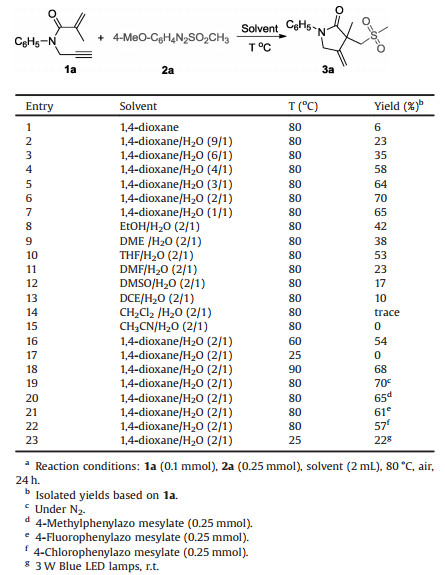
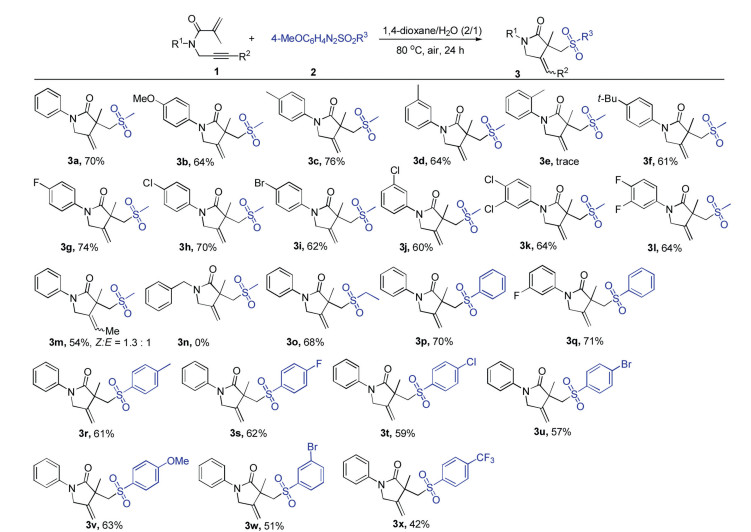
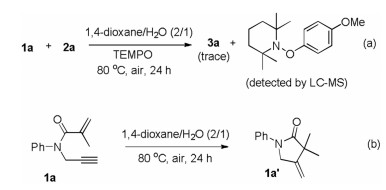
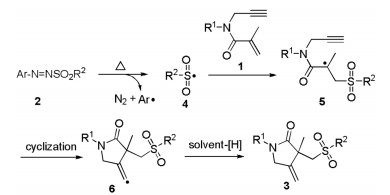
 DownLoad:
DownLoad: